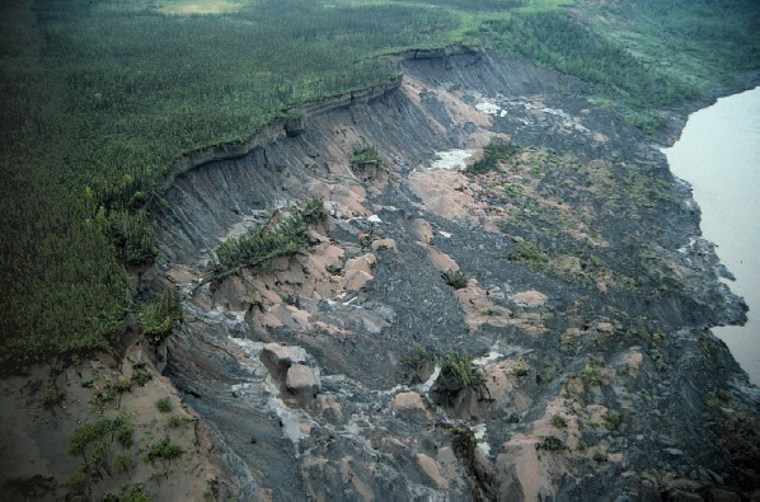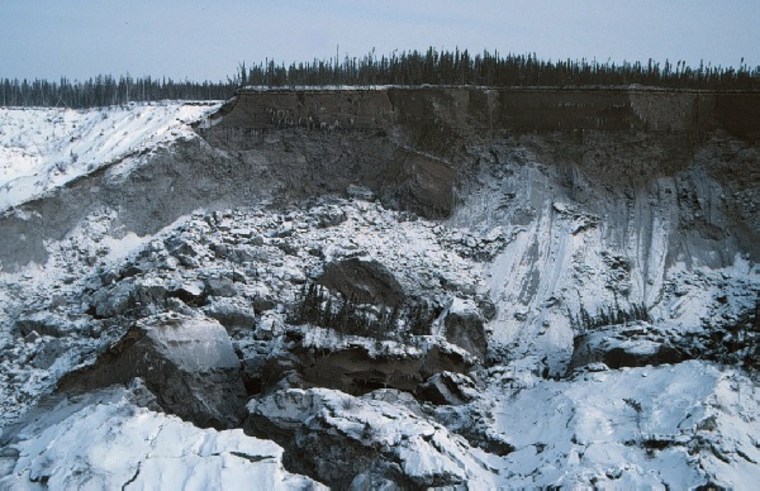Environmental hearings on Canada's proposed $6 billion Mackenzie Valley pipeline opened with warnings that the safety of the pipeline and the natural gas fields that feed it is threatened by climate change that already is damaging northern roads and airstrips.
Government scientists and environmental groups said pipeline builder Imperial Oil hasn't accounted for permafrost melting under the pipeline. Nor has it considered the effect of higher sea levels and longer storm seasons along the low-lying gas fields that would serve Canada as well as the United States.
"It's really the frozen ground that creates the structure that protects the pipeline," said Stephen Hazell, conservation director of the Sierra Club of Canada. "You could get shearing of the pipeline. ... Whole slopes could subside as the permafrost melts."
Hazell spoke at the opening day of environmental and social hearings Tuesday on the effects of the proposed pipeline.
Year-long hearings
Over the coming year, a seven-member panel will hear testimony in 27 communities from Tuktoyaktuk to Calgary on how the massive project — and the industrialization that will come in its wake — is likely to affect delicate Arctic ecosystems and the isolated, largely aboriginal communities that depend on them.
The panel will present its findings and recommendations to the National Energy Board, which is holding parallel hearings on the engineering and economic aspects of the project.
In an interview, Hazell pointed out that two of the project's main gas fields, which lie right along the Beaufort Sea, are only 5 feet above sea level and are already prone to spring flooding. And a four-year study released last year by 300 scientists from eight countries estimated the sea level would rise by about 3 feet by the end of the century.
Hazell also said Imperial hasn't adequately explained how it would build a pipeline able to stay intact despite losing the permafrost it sits on.
"The jury's out right now on whether or not these permafrost issues can be successfully mitigated," he said. "It's definitely the case that the proponents have not yet done the engineering work and studies ... along the length of the pipeline."
Government concerns
Two federal government departments echoed Hazell's concerns.
"The Mackenzie Basin has experienced some of the greatest warming in the circumpolar North in the past 50 years," said Jim Vollmarshausen of Environment Canada. "Climate variability and change poses a serious threat to the viability and integrity of the project."
Natural Resources Canada expressed similar reservations.

Imperial has taken climate change into account, said company spokesman Pius Rolheiser. However, he acknowledged Imperial may have more to do.
"We are proud of the work we've done that forms the application, but are we finished yet? Probably not," he said.
Among the concerns is the fact that some 2,000 slides have been documented in the Mackenzie Valley as permafrost thaws.
Approval is being sought for five developments: gas production facilities in three fields owned by Imperial, Conoco and Shell; gathering pipelines; a processing facility near Inuvik; a liquids pipeline; and the gas line itself.
Sagging airstrips
Northern infrastructure is already deteriorating as the region's climate warms.
In Yellowknife, an insulating liner had to be installed 13 feet under a 330-foot section of runway with a history of sagging. Transport Canada says 42 other airstrips are likely to be affected.
Portions of the road from Yellowknife to Fort Providence have been abandoned and rebuilt over more stable permafrost.
And the season for ice bridges and ice roads, which the oil industry uses to move heavy equipment so as to less the impact on the tundra, has shrunk from an average 75 days before 1996 to about 47 days.
